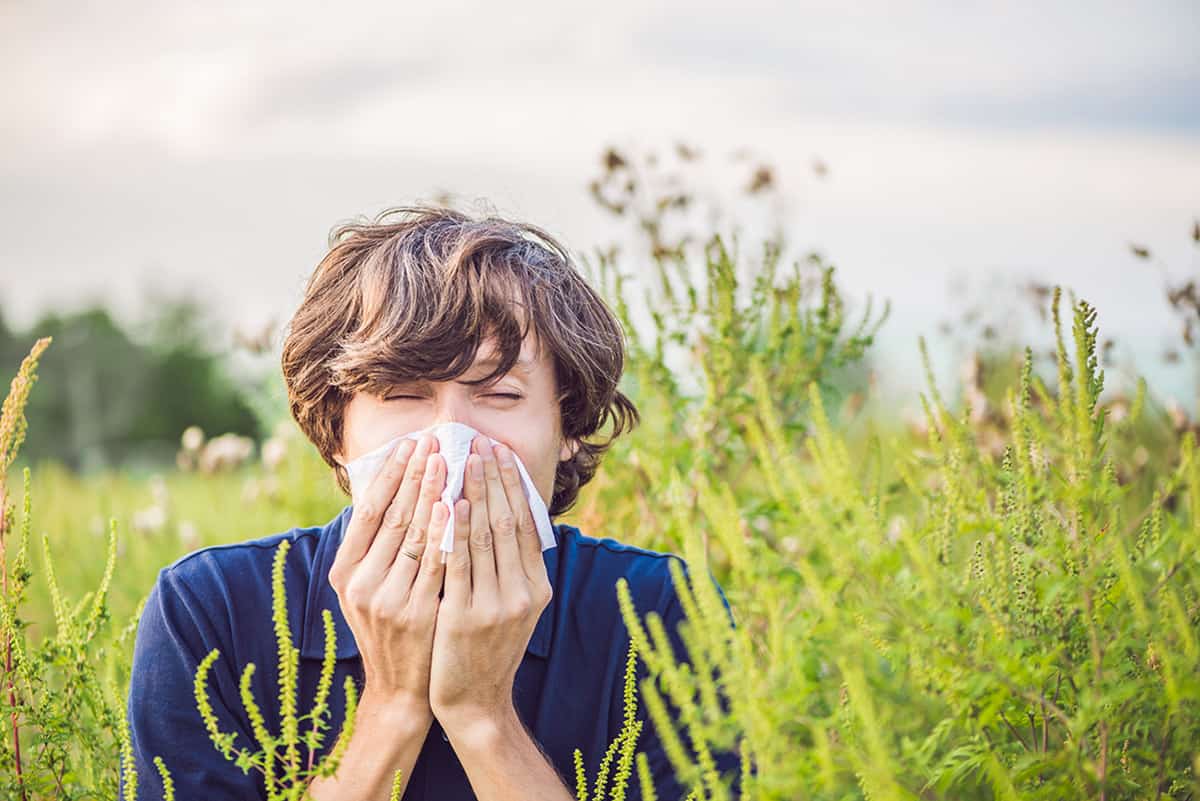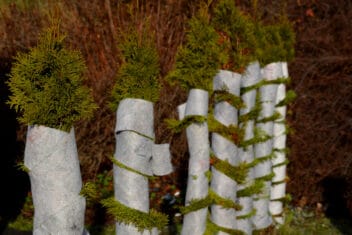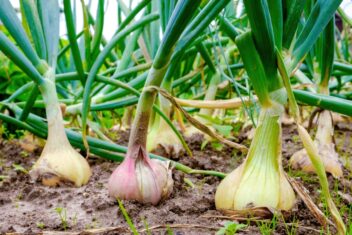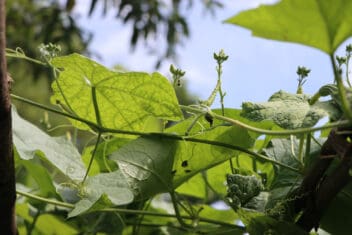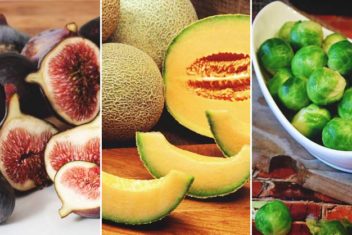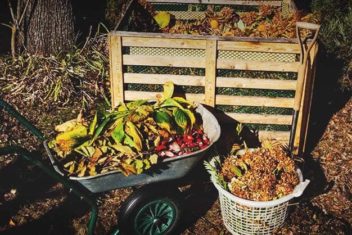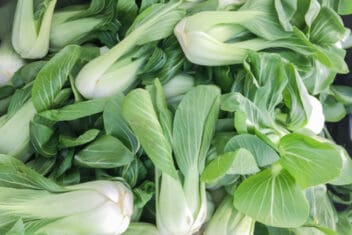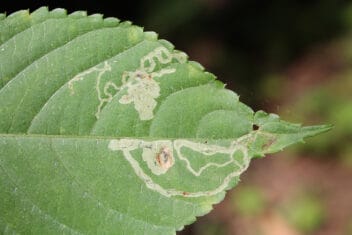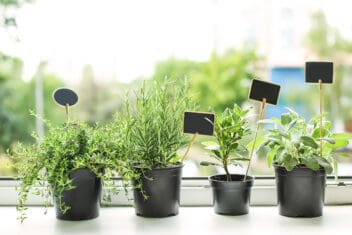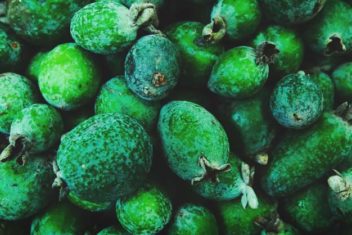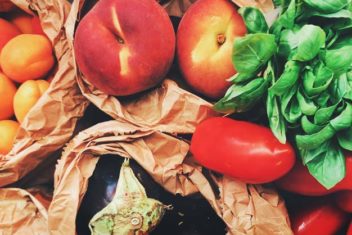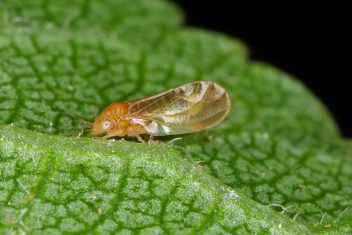If you suffer from allergies, but love gardening, you can still indulge in your passion. There are many plants you can surround yourself with that won’t set your allergies into overdrive.
At certain times of the year, the air is alive with pollen and, if you’re sensitive, you could be forgiven for thinking that concreting over your garden would be preferable. It doesn’t have to be that way, though.
If you have allergies from plants and pollen, you can still enjoy gardening and the outdoors, you just need the right plants.
Best Trees for People With Allergies
Trees can be a major source of allergies, especially those with tons of flowers. But that doesn’t mean you have to be stuck with bland greenery. Here are some excellent options.
1. Apple
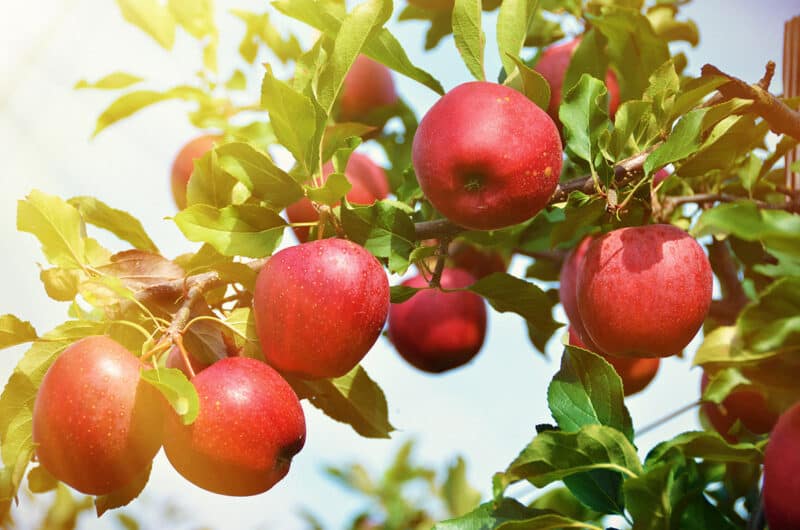
These trees have both male and female parts in the same flower, so pollen doesn’t have to travel far. That’s good news for allergy sufferers. These types of flowers are called complete, or bisexual.
Want even more good news? There are many types of apples that you can choose from, so you can find a tree whether you want something tall, dwarf, or mainly ornamental.
- USDA Growing Zones: 3-8
- Sun Requirements: Full
2. Persimmon
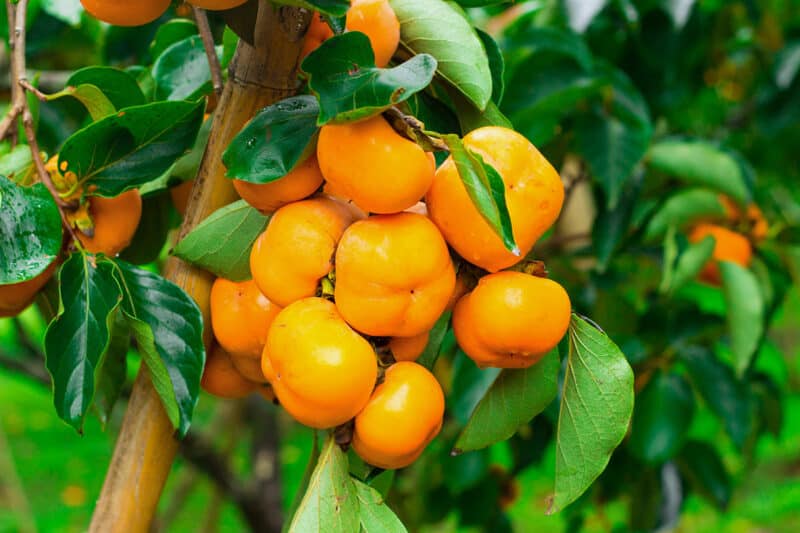
Most persimmons produce have a low pollen count or no pollen at all. They are dioecious, meaning they’re separately sexed. In other words, a female tree produces female flowers that need pollination from the male flowers on separate trees. The female flowers form into fruits.
On top of being allergy-friendly, if you’ve never had a fresh persimmon off the tree, you’ll be delighted.
- USDA Growing Zones: 5-11
- Sun Requirements: Full
3. Mulberry
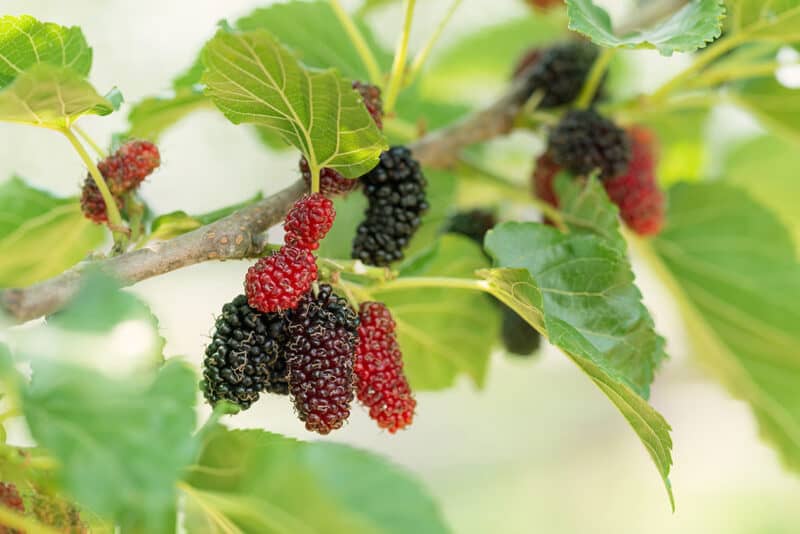
Not all mulberries are good for allergy sufferers. Specifically, you want to hunt down the ‘Illinois Everbearing’ hybrid mulberry. The majority of flowers on this tree are female and pollen-free.
It’s self-fertile and the fruit is seedless.
Avoid white mulberry, because it often has a high pollen count.
- USDA Growing Zones: 4-8
- Sun Requirements: Full to part sun
4. Black Elderberry
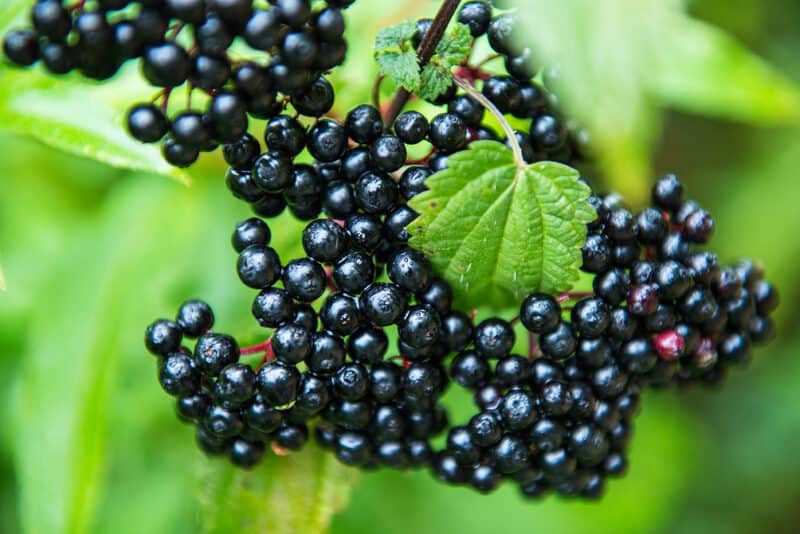
Technically, elderberries are shrubs, not trees. But most people grow them as trees since they can get large, particularly the European varieties.
Elderberries are allergen-free and attract many songbirds. They’re rapid growers – so much so that some areas consider elderberry plants to be invasive.
How do you use up all those fruits? You can make elderberry wine, jam, and winter tonic. Keep in mind that you should cook the berries before consuming them.
- USDA Growing Zones: 4-7
- Sun Requirements: Full to part sun
5. Serviceberry
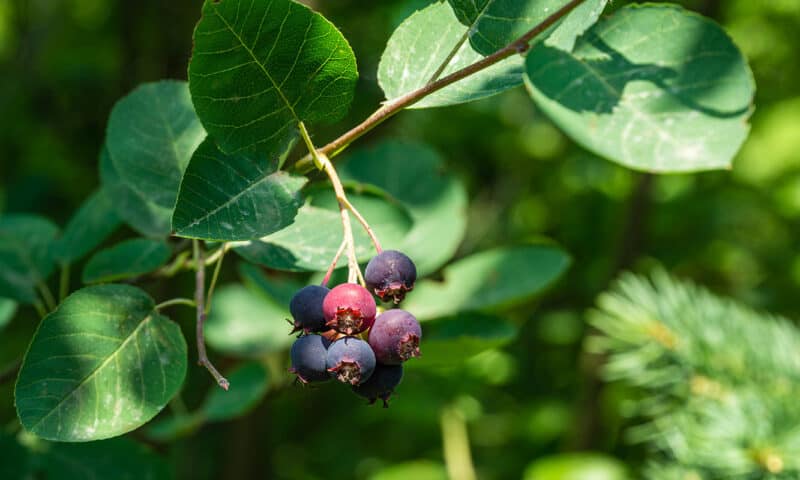
There are various varieties of serviceberry (also known as shadbush, Saskatoon, or sugarberry), and none are known to cause allergies. No matter the type, the plant forms beautiful berries in late spring and early summer.
Shadbush is from the rose family, which is another plant with low pollen count.
- USDA Growing Zones: 2-9
- Sun Requirements: Full to part sun
6. Magnolia
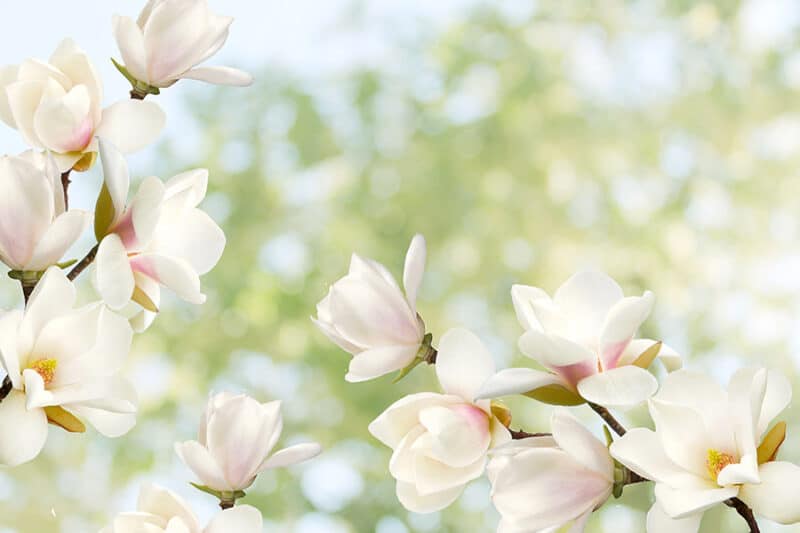
This is a great choice for a low allergen plant. It produces pollen, but it’s coarse, rather than fine, making it heavier and less likely to be airborne.
- USDA Growing Zones: 6-10
- Sun Requirements: Full to part sun
7. Dogwood
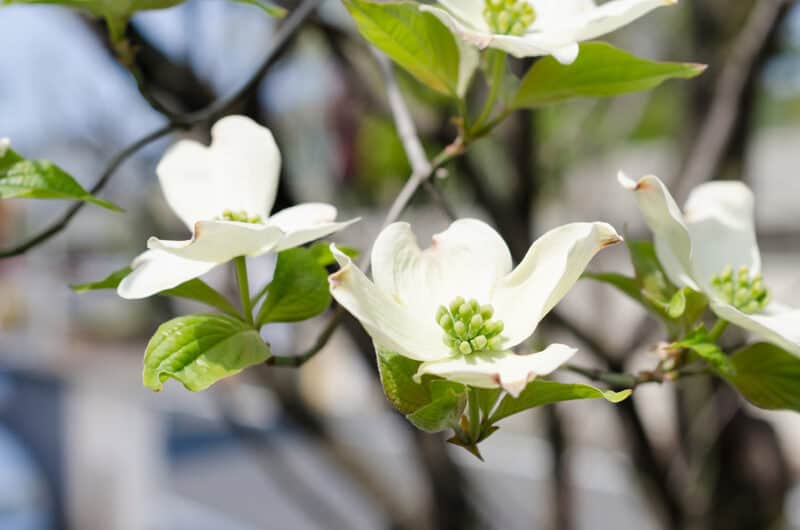
There are a lot of varieties of dogwoods and they all produce lovely blossoms in the spring. They are low in allergens and one of the most popular garden trees in North America.
- USDA Growing Zones: 5-9
- Sun Requirements: Full sun to part shade
8. Pear
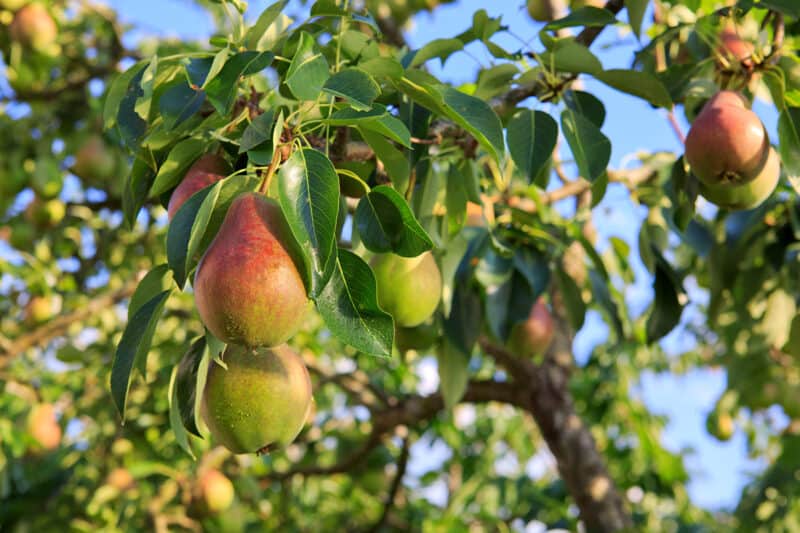
Pear trees are super versatile. They come in dwarf varieties perfect for patio gardens, or you can grow 30-foot tall trees that will give you all the fruit you need.
There are pears perfect for dessert and those that are more savory. Some are massive and some are bite-sized.
The best part? None of them will set off allergies for the average person.
- USDA Growing Zones: 3-8
- Sun Requirements: Full sun
9. Cherry

Whether you prefer sweet cherries or sour, if you have allergies, you might want to consider keeping cherry trees in your orchard.
You need several cherries so they can pollinate each other and grow you tons of those incredible fruits.
- USDA Growing Zones: 4-7
- Sun Requirements: Full
10. Plum
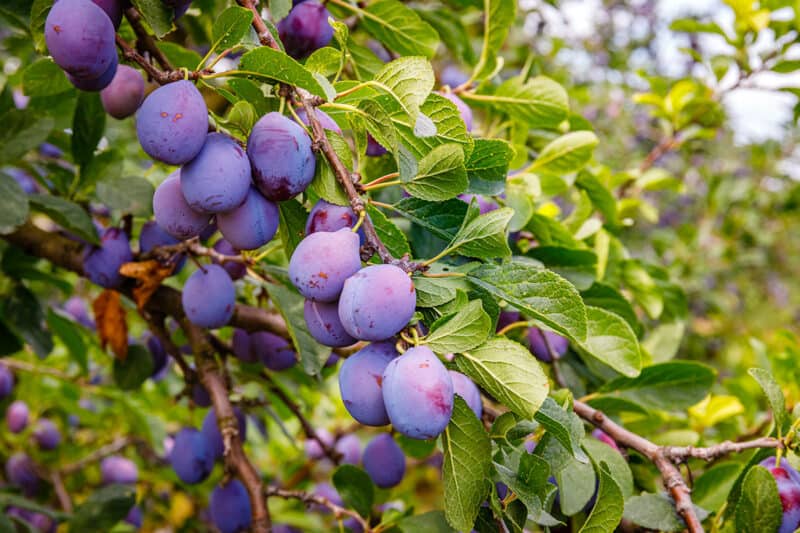
Depending on the type, plums are self-fertile or they may need a companion. European varieties are self-fertile, so aim for those if you have allergies. Self-fertile plants tend to put less pollen out into the air.
Plums aren’t super fussy, with makes them ideal for the fruit lover with the brown thumb. Just make sure they have well-draining soil and lots of sun.
- USDA Growing Zones: 3-8
- Sun Requirements: Full
Shrubs for Allergy Sufferers
You might not realize it, but shrubs can be a major source of allergies in the garden. Here are some good options that won’t make things worse:
11. Hydrangea
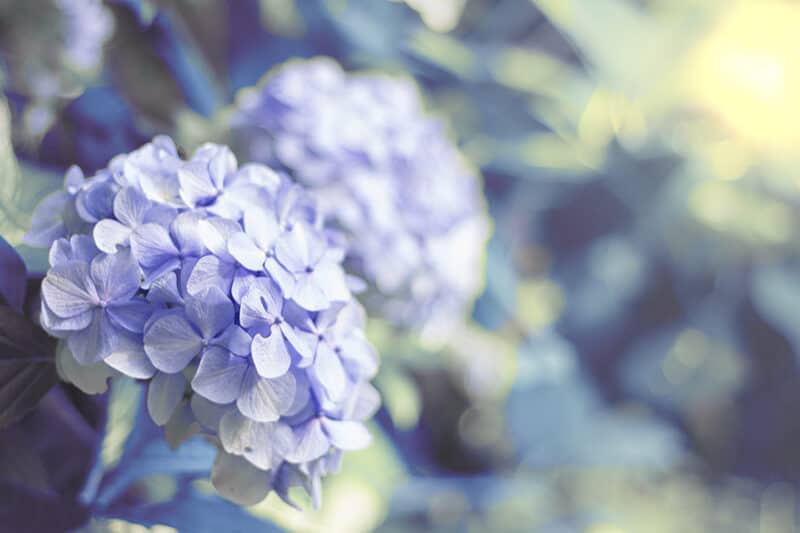
This pretty shrub has pollen, but it’s sticky and isn’t blown around by the wind. That’s a nice thing for allergy sufferers. On top of that, they’re undeniably beautiful.
- USDA Growing Zones: 3-9
- Sun Requirements: Part sun
12. Azalea
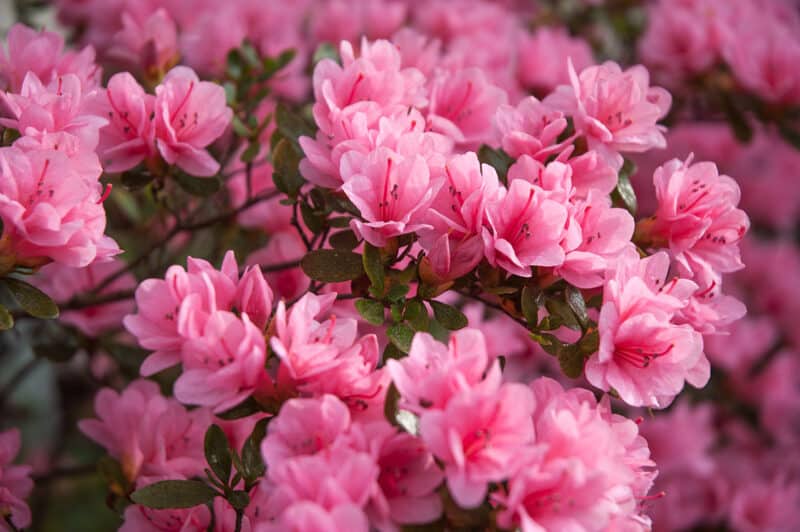
Azaleas produce pollen, but they don’t generally release it. They rely on insects for pollination, instead. That said, if you’re extremely sensitive, don’t plant this in your garden.
- USDA Growing Zones: 5-8
- Sun Requirements: Full sun to part shade
13. Rhododendron
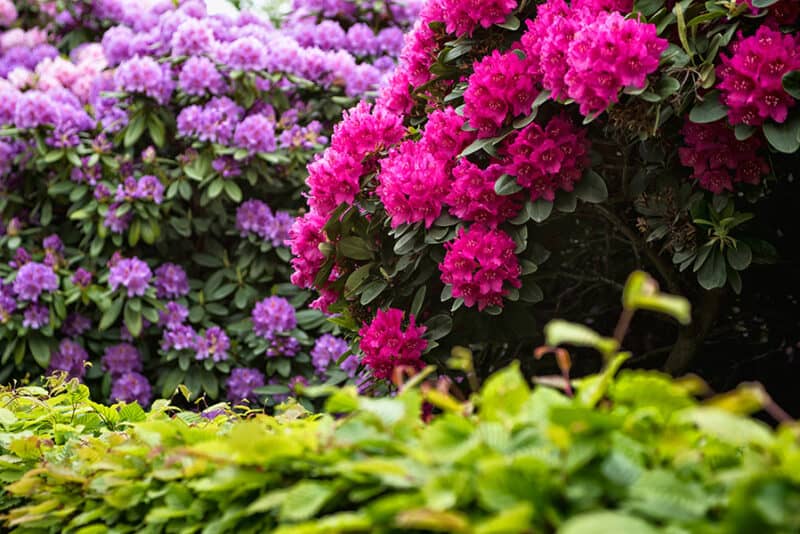
Many varieties of rhododendron produce flowers, mainly from early winter to late spring. They also have sticky pollen that doesn’t blow around in the wind much. Good news for the allergy sufferer.
- USDA Growing Zones: 4-8
- Sun Requirements: Part sun to part shade
14. Boxwood
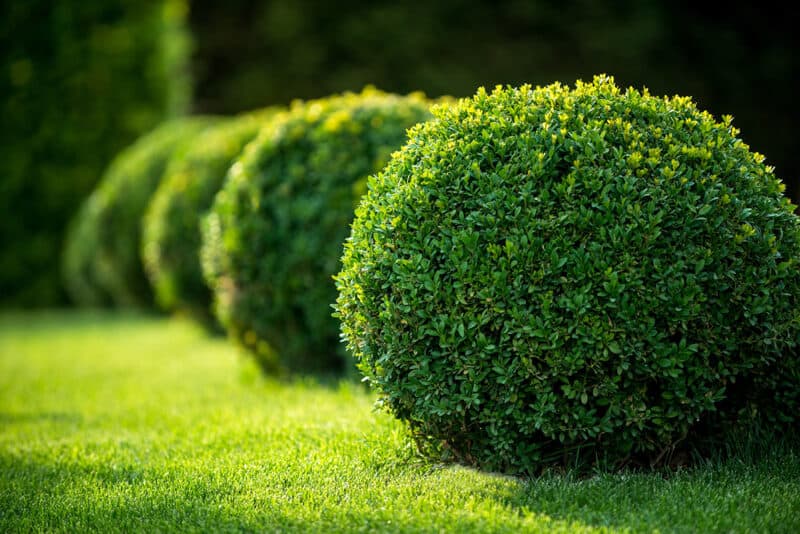
Boxwood is a good choice for a hypoallergenic garden, especially because they are great for containers and pots by doors and entrances.
However, to be hypoallergenic, boxwood needs to be pruned regularly to nip off any forming flowers. If you let them bloom and release their pollen, you’re in for a tough time!
- USDA Growing Zones: 5-9
- Sun Requirements: Full sun to part sun
15. Viburnum
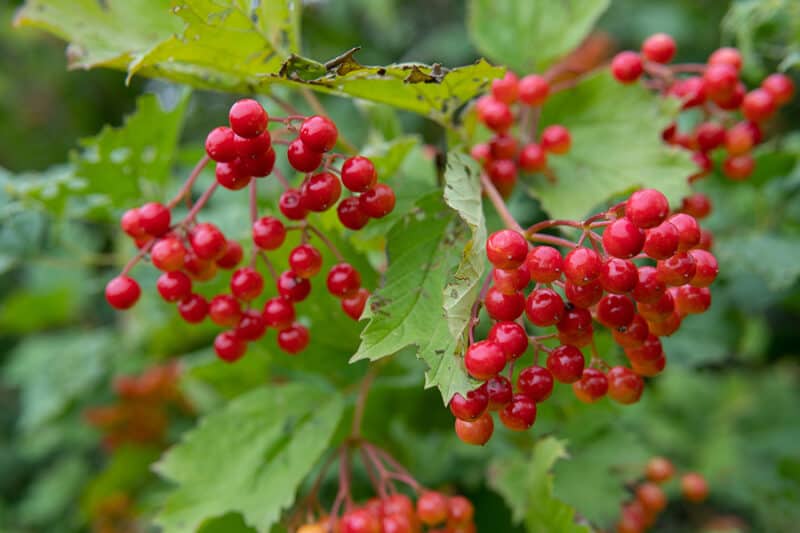
Viburnums offer lots in the way of fall color and berries. You can find evergreen, semi-evergreen, and deciduous types in a range of blossoms and sizes.
These plants aren’t too demanding, so you’ll likely be able to succeed even if you aren’t a gifted gardener.
- USDA Growing Zones: 2-11
- Sun Requirements: Full sun to part sun
16. Hibiscus
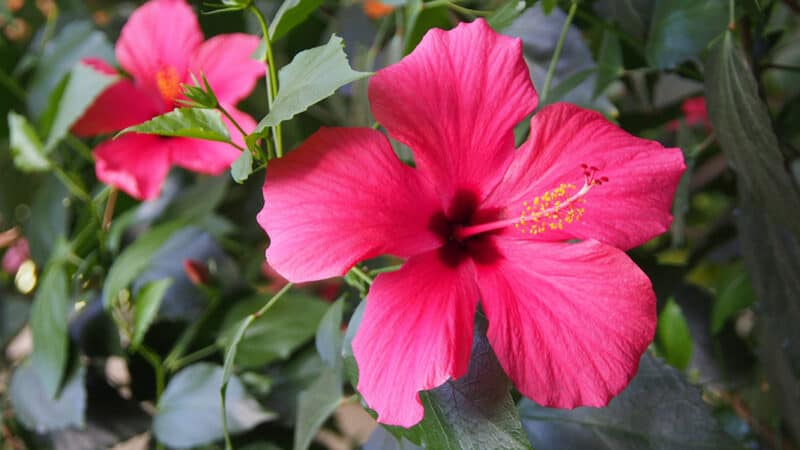
Hibiscus are showy in the garden, with big, colorful blooms. The plants form a ton of pollen, but it isn’t airborne.
- USDA Growing Zones: 5-11
- Sun Requirements: Full sun to part shade
17. Female Wax Myrtle
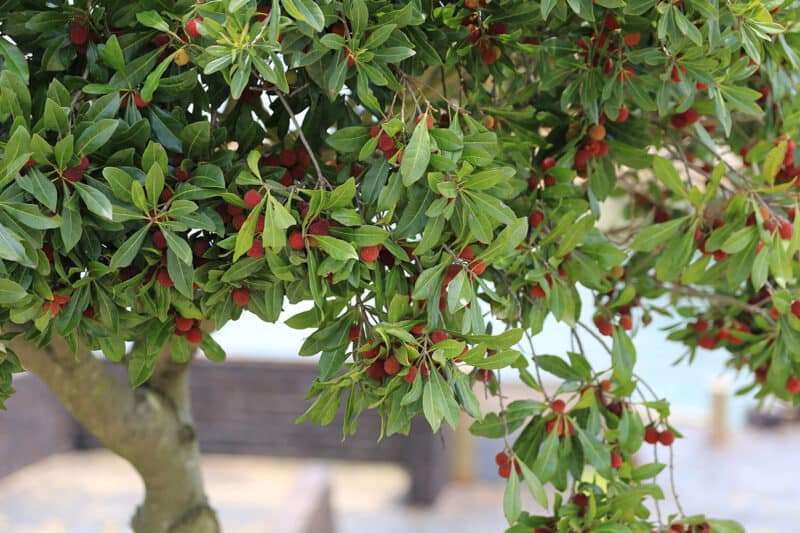
Wax myrtles grow fast and have glossy green leaves that smell like bayberry, which makes sense since the plant is used in candlemaking.
They’re also ideal plants if you struggle with allergies – so long as you stick to the females. They’re the ones that don’t produce pollen.
- USDA Growing Zones: 7-10
- Sun Requirements: Full sun to part sun
18. Female Pittosporum
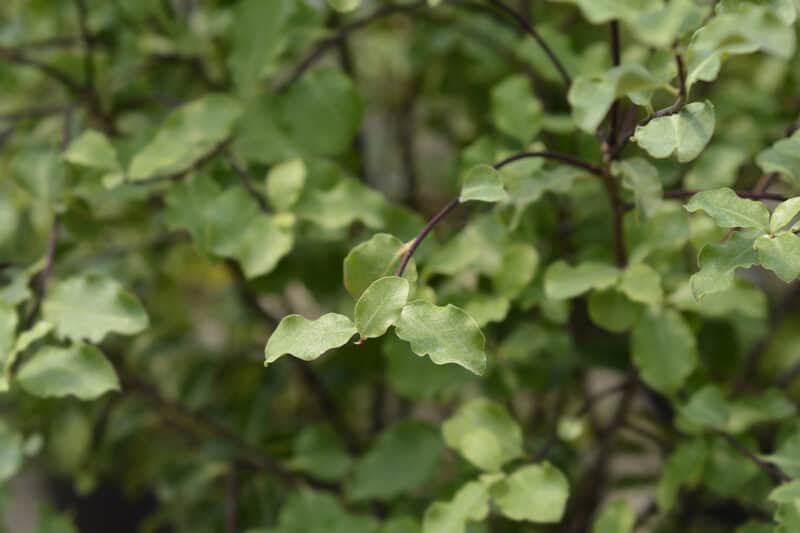
Pittosporum can be grown as a shrub, hedge, of even a small tree. The lacy foliage makes a charming addition to the garden. Just be sure you’re choosing a female plant.
The male plants produce flowers with pollen that can be irritating to people with allergies.
- USDA Growing Zones: 9-11
- Sun Requirements: Full sun to full shade
The Perfect Flowers to Avoid Allergies
Most of us want some color in the garden. Luckily there are plenty of flowers we can use that are the perfect plants for sufferers of allergies.
19. Tulip
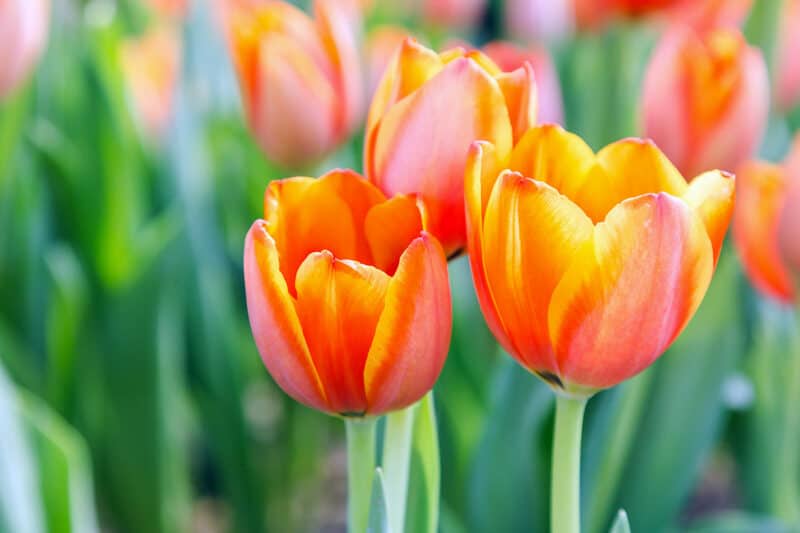
Tulips mean spring to me, so I’m happy that they’re low in pollen. They’re so low, in fact, you can cut them and arrange them indoors and it shouldn’t affect you.
- USDA Growing Zones: 3-8
- Sun Requirements: Full sun to part sun
20. Geranium
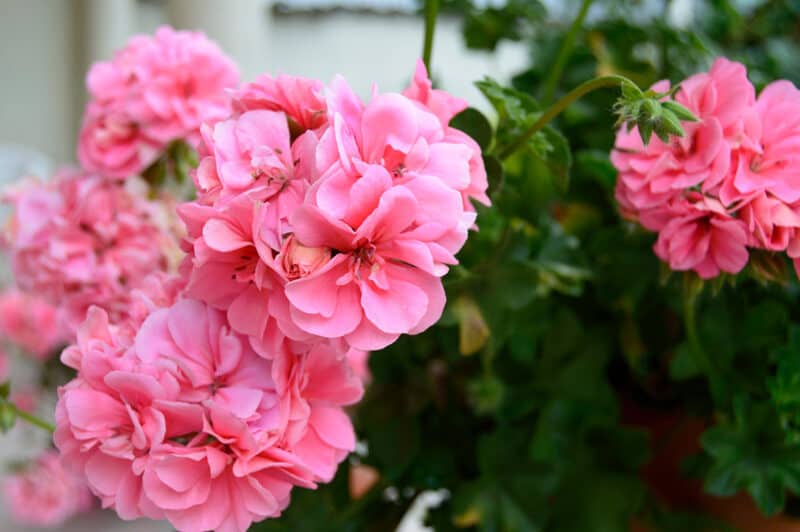
Geraniums come in many colors, shapes, and sizes and they thrive in a range of conditions. Plus, they’re also the perfect plants for people with allergies because they don’t produce much pollen.
- USDA Growing Zones: 10 -11 and as annuals
- Sun Requirements: Full sun
21. Daffodil
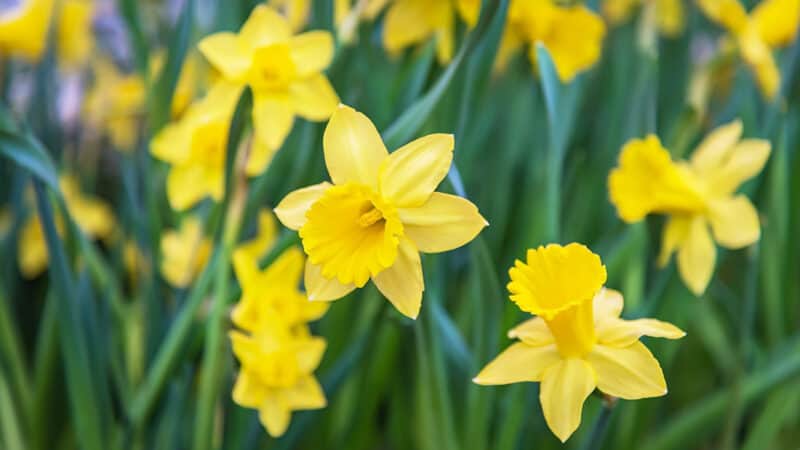
This is another flower that signals spring. Daffodils produce pollen, but it stays within the cup of the flower. You might want to avoid cutting them and working with them indoors, though.
- USDA Growing Zones: 3-8
- Sun Requirements: Full
22. Lily
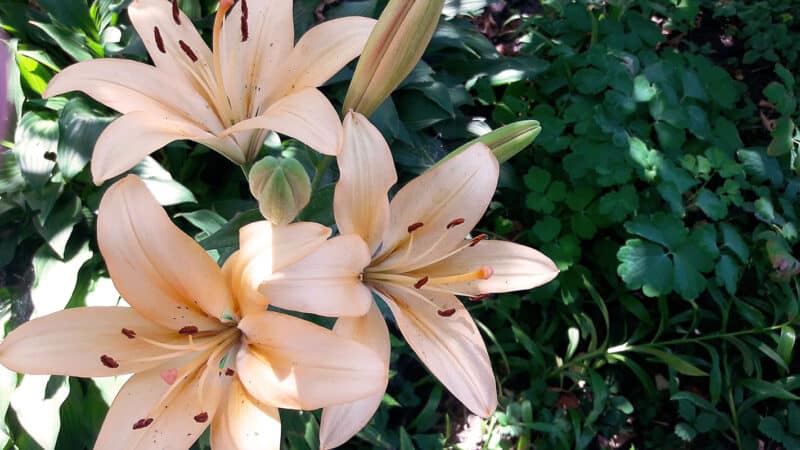
These distinctive, stunning plants produce pollen that is heavy and carried by insects, not the wind.
However, if you decide to bring them indoors, wear a mask and cut off the stamens.
- USDA Growing Zones: 4-9
- Sun Requirements: Full sun to part shade
23. Iris
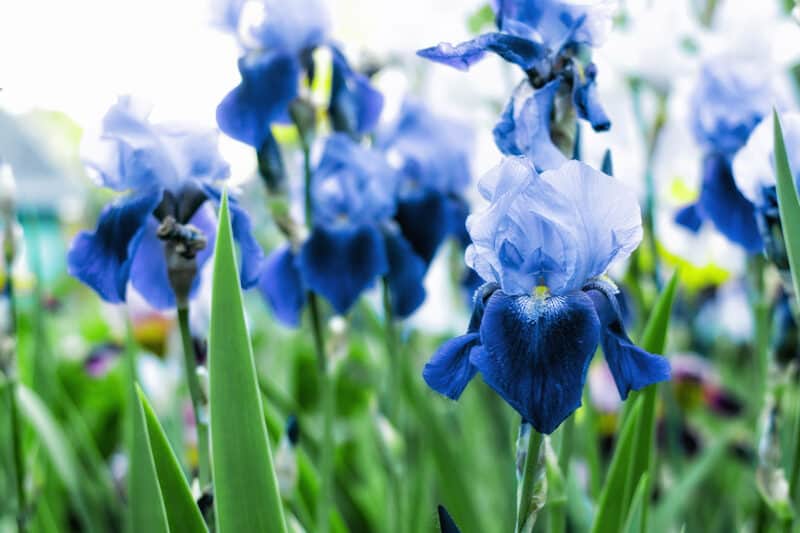
Irises have stunning, distinct petals that stand out in the garden. Their intense coloring really draws the eye, as well.
But are they good plants for someone with allergies? Luckily, they have such heavy pollen particles that get trapped within the petals instead of floating on the air. That makes them perfect for allergy sufferers.
- USDA Growing Zones: 3-10
- Sun Requirements: Full sun to part sun
24. Rose
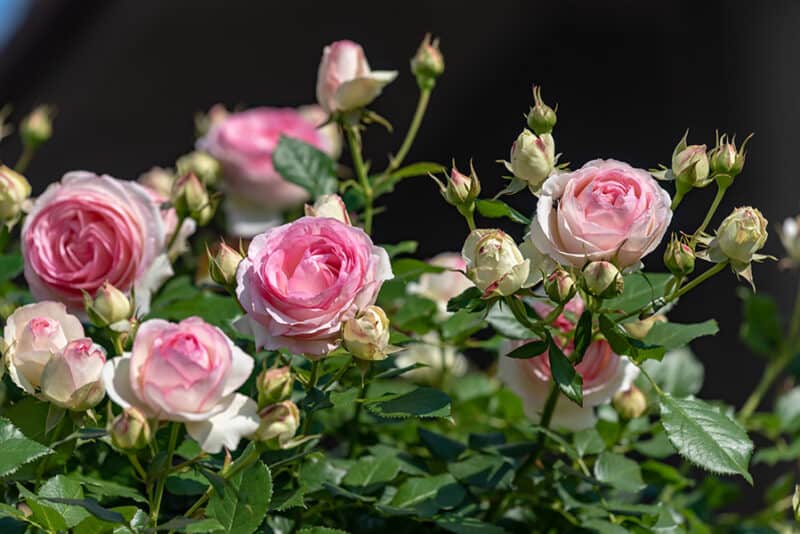
Rose lovers rejoice! If you’re struggling with allergies, it’s likely not your roses causing the problem. That’s great, because who doesn’t think roses are elegant and classic in the garden?
On top of that, there are varieties that thrive in heat and others in cold. Some need tons of sun and a few practically don’t need any sun at all.
Roses are self-pollinating flowers and don’t produce pollen that becomes airborne.
- USDA Growing Zones: 3-11
- Sun Requirements: Full sun to full shade
25. Sunflowers

Not all sunflowers are hypoallergenic, so be careful you don’t buy one unless you know for sure. For allergy sufferers, look for Apricot Twist, The Joker, or Infrared Mix.
- USDA Growing Zones: 2-11
- Sun Requirements: Full sun
26. Peony
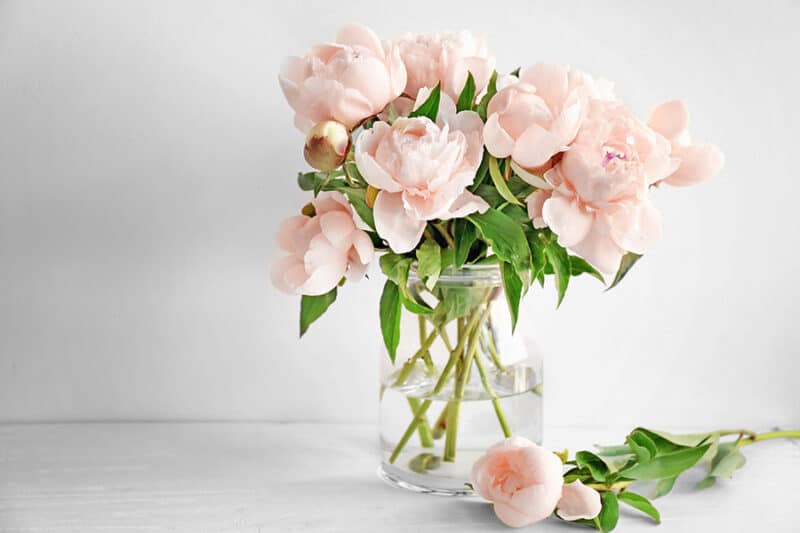
Peonies produce pollen, but the multiple layers of petals that they have traps it, preventing it from getting into the air.
- USDA Growing Zones: 3-9
- Sun Requirements: Full sun to part sun
27. Snapdragon
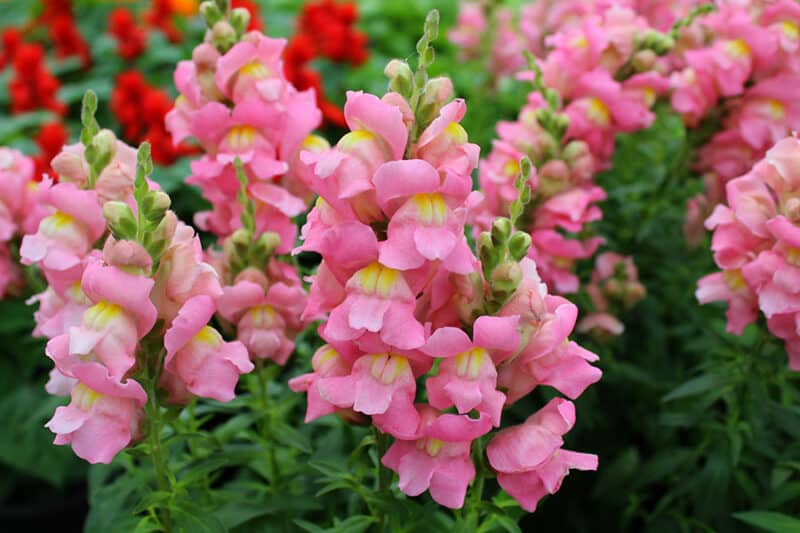
These are probably my favorite flower for a hypoallergenic garden. They add height and the petals cover the stamen to lock the pollen inside. That is, unless you open the flowers to make them talk, like you probably did when you were a kid.
- USDA Growing Zones: annuals
- Sun Requirements: Full sun to part sun
28. Zinnia
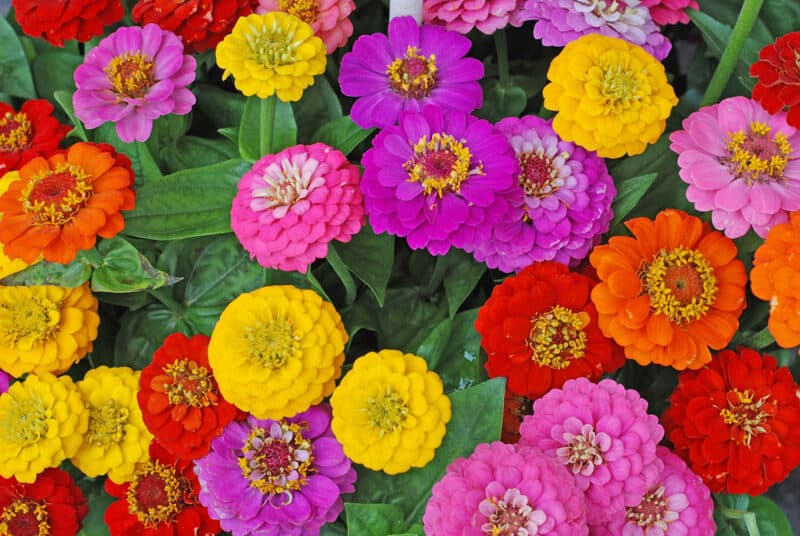
If you want garden color that lasts all year, you can’t go wrong with zinnias. They bloom all season long and they come in a massive range of bright, bright colors.
Plus, they’re so easy to grow that they were once known as “every man’s flower.”
Oh yeah, and they’re one of the perfect plants for people with allergies.
- USDA Growing Zones: 2-10 as annuals
- Sun Requirements: Full sun to part sun
29. Orchid

True, orchids can be fussy. But if you want a stunning flower, or one that you can grow indoors without setting off your allergies, it’s a great option.
- USDA Growing Zones: 5-9
- Sun Requirements: Full sun to part shade
30. Impatiens

Have a shady corner that you want to give some color without making yourself itchy and sneezy? Impatiens might be the answer.
- USDA Growing Zones: annual
- Sun Requirements: Part sun to full shade
31. Petunia

Pretty petunias are a garden staple for a reason. They give you reliable color all season long, they come in a range of colors and sizes, and they aren’t demanding.
Plus, if you struggle with allergies, they’re one of the plants that won’t make things worse.
- USDA Growing Zones: annual
- Sun Requirements: Full sun to part sun
Plants to Avoid for Allergy Sufferers
Although there are many plants to avoid putting in a hypoallergenic garden, there are some surprising ones to avoid that are extremely high in pollen count:
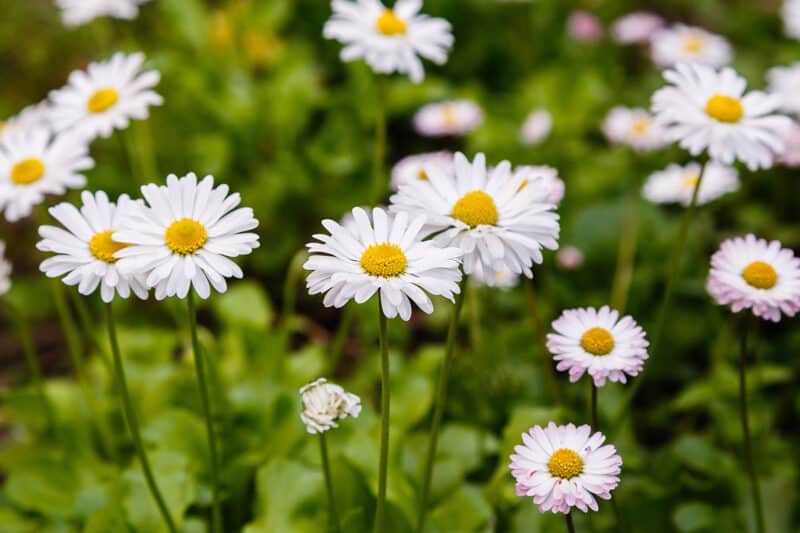
- Chamomile: The flowers of the chamomile plant produce a lot of pollen. Even when the flowers are dried for tea, pollen remains that can affect sensitive people.
- Daisy: Daisy’s aren’t wind-pollinated, but they do produce a lot of pollen that will aggravate people with allergies. Some daisy relatives such as ragweed are some of the worst allergy culprits.
- Chrysanthemum: Chrysanthemums don’t necessarily produce more pollen than other flowers, but they tend to have a lot of blooms on a plant, increasing the pollen count. Blooming late into summer and fall, a lot of people forget about pollen issues late in the season but get affected by chrysanthemum.
- Dahlia: Although they are insect-pollinated, dahlias produce excessive amounts of pollen that can affect people with allergy concerns.
- Baby’s Breath: It’s surprising how much pollen these little flowers produce. They often get put in flower arrangements and can affect people who receive them. There is a hybrid version called double-flowered that naturally produces little pollen.
Other Gardening Tips for Allergy Sufferers
Some plants reproduce by releasing billions of tiny little pollen spores. This happens in the spring, summer, and fall, and they wreak havoc on anyone with allergies.
If that sounds like you, plant varieties that use insects to pollinate because their pollen is usually heavier. You could also plant female varieties of plants as they trap pollen spores.
- Pay attention to the pollen count if your local authority provides one.
- On wet, cool days, the pollen count is lower than hot dry days.
- Mow your lawn regularly to keep weeds and seeds from spreading.
- If necessary, wear a mask, gloves, and long sleeves to reduce contact with pollen.
- Shower when you finish gardening to wash pollen from your body.
One simple tip I have for a low allergen garden is seeking bee and butterfly friendly perennials and shrubs. Insect pollinated plants don’t release pollen as a wind-pollinated plant does. That makes the bees and butterflies happy too.
If you suffer from allergies and love gardening, you can still do it. Speak to your local extension office and get some tips because there are often hybrids that look amazing, but have little to no pollen.
